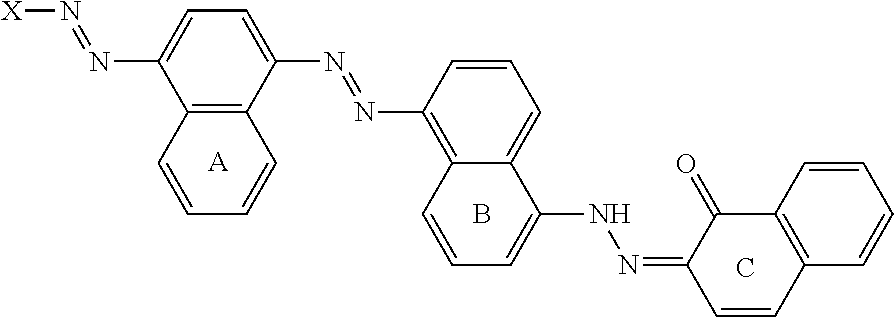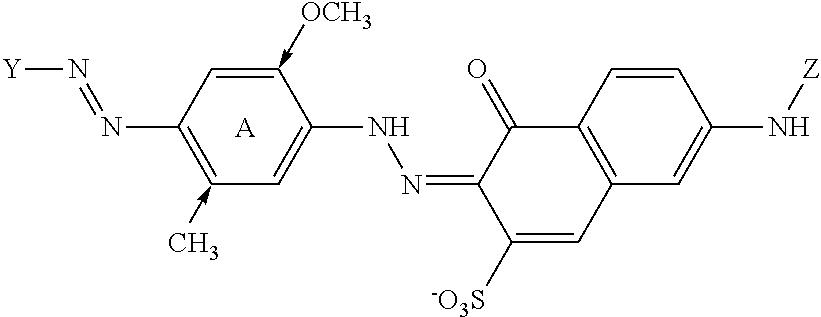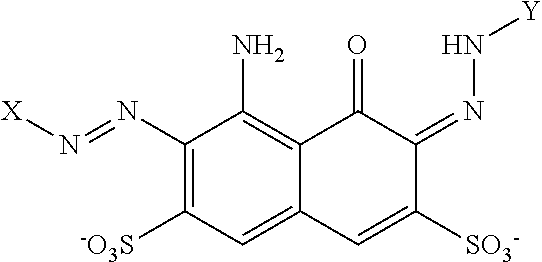Cleaning composition comprising amylase variants with high stability in the presence of a chelating agent
a technology of alphaamylase and chelating agent, which is applied in the direction of detergent compositions, detergent compounding agents, enzymology, etc., can solve the problems of destroying the stain removal effect and the need for calcium, and achieve the effect of increasing wash performance or retaining calcium
- Summary
- Abstract
- Description
- Claims
- Application Information
AI Technical Summary
Benefits of technology
Problems solved by technology
Method used
Image
Examples
example 1
Preparation of Variants
[0478]The Amylase variants of SEQ ID NO: 6 SP722 were prepared by standard procedures, in brief: Introducing random and / or site-directed mutations into the gene, transforming Bacillus subtilis host cells with the mutated genes, fermenting the transformed host cells (e.g. as described in Example 1 of WO 2004 / 111220), and purifying the amylase from the fermentation broth. The reference amylase (SEQ ID NO: 6) was produced recombinantly in Bacillus subtilis in a similar manner.
example 2
Characterization of Chelating Agents
Example 2a
Measure of Free Calcium Ions
[0479]Chelating agents (chelants) may be ranked by their ability to reduce the concentration of free calcium ions (Ca2+) from 2.0 mM to 0.10 mM at pH 8 developed from a method described by M. K. Nagarajan et al., JAOCS, Vol. 61, no. 9 (September 1984), pp. 1475-1478. The assay described above under “Materials and Methods” for measuring free calcium ions was used.
[0480]Accordingly, the concentration of chelant necessary to reduce the water hardness from 2.0 mM to 0.10 mM was determined as described above. The experiment was carried out with the pH 8 buffer at 21° C.
[0481]The final concentrations of chelant used and the free Ca2+ concentration measured are shown in table I below.
TABLE IConcentration of free Ca2+ determined in a mixture of 2.0 mMCa2+ and various amounts of chelating agent at pH 8.mLmMCalciummL electrolytemLmLchelant finalstock solutionsolutionpH 8 bufferchelantconcentration4145.00.00.004144.01.00...
example 2b
Determination of Log K
[0484]Alternatively the chelating agents can be characterized by the binding constant of the chelating agent (chelator) and calcium ions. This constant can be determined by ITC (isothermal titration calorimetry) as described by A D Nielsen, C C Fuglsang and P Westh, Analytical Biochemistry Vol. 314 (2003) page 227-234 and T Wiseman, S Williston, J F Brandts and L-N Lin, Analytical Biochemistry Vol. 179 (1989) page 131-137. The procedure for determining log K is described
[0485]Using this procedure the following log K values were determined at pH 10 (see Table III):
TABLE IIILog KLog K relative to log K for citrateCitrate31.00EGTA93.0EDTA82.7HEDP62.0DTPA72.7MGDA51.3
PUM
| Property | Measurement | Unit |
|---|---|---|
| Temperature | aaaaa | aaaaa |
| Temperature | aaaaa | aaaaa |
| Temperature | aaaaa | aaaaa |
Abstract
Description
Claims
Application Information
 Login to View More
Login to View More - R&D
- Intellectual Property
- Life Sciences
- Materials
- Tech Scout
- Unparalleled Data Quality
- Higher Quality Content
- 60% Fewer Hallucinations
Browse by: Latest US Patents, China's latest patents, Technical Efficacy Thesaurus, Application Domain, Technology Topic, Popular Technical Reports.
© 2025 PatSnap. All rights reserved.Legal|Privacy policy|Modern Slavery Act Transparency Statement|Sitemap|About US| Contact US: help@patsnap.com



